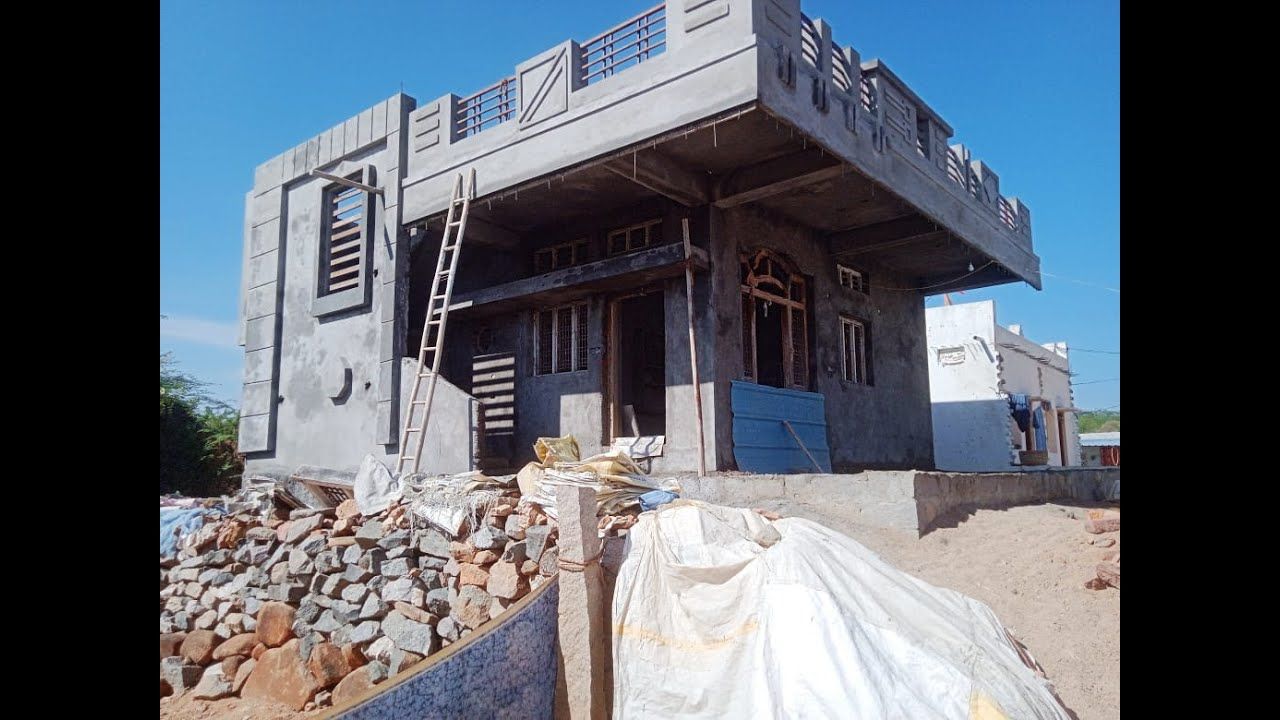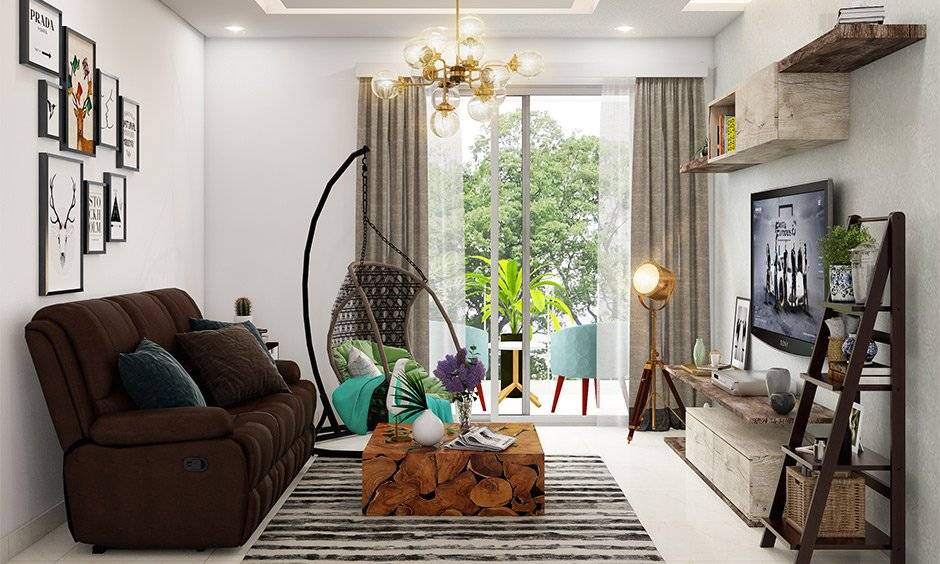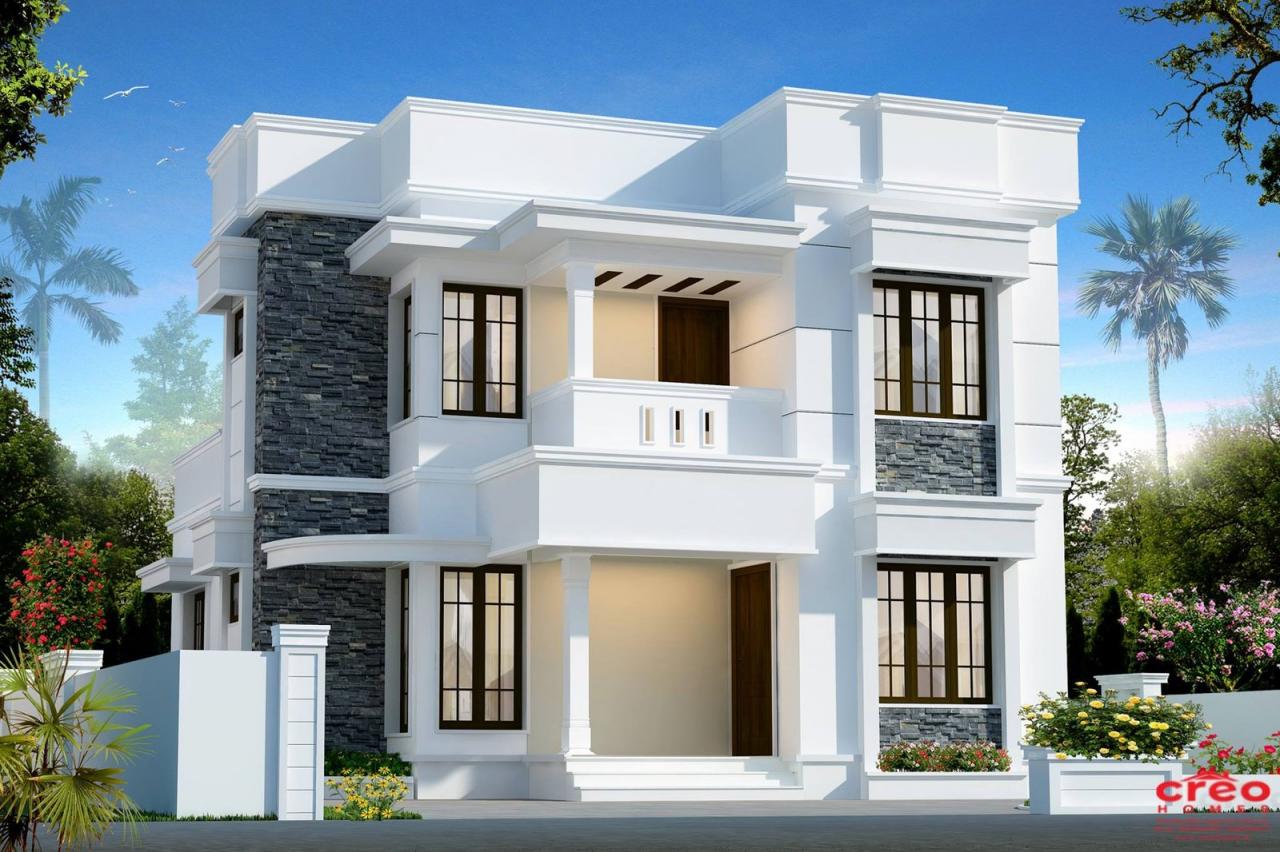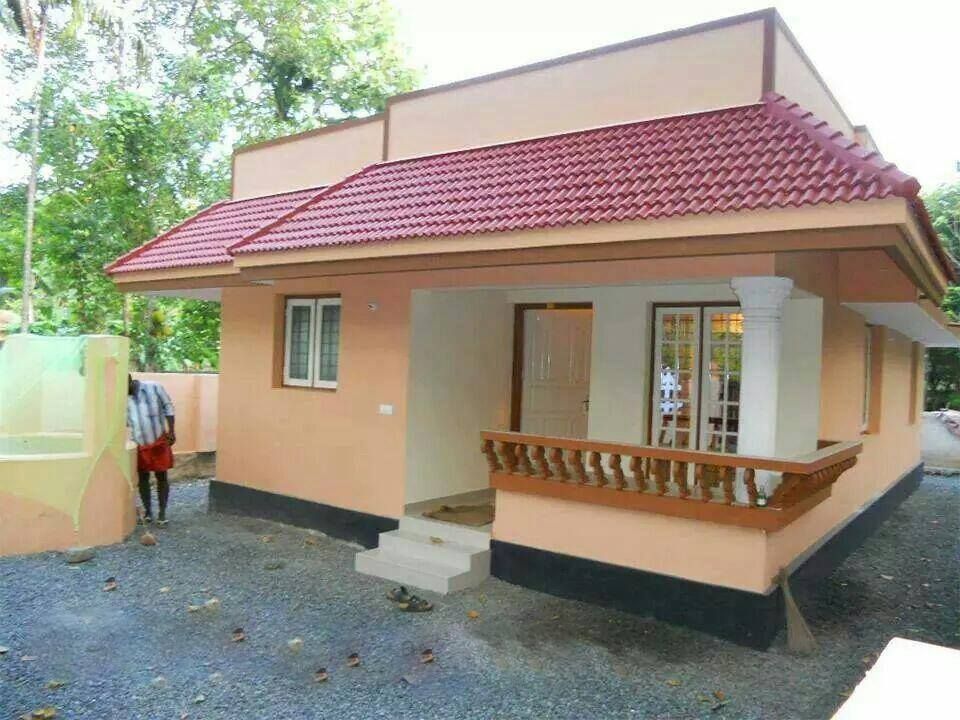Home design isn’t just about aesthetics; it’s about crafting a space that reflects your personality and enhances your lifestyle. From minimalist havens to maximalist extravaganzas, the possibilities are endless. This exploration delves into the diverse world of home design, covering everything from architectural styles and interior elements to smart home technology integration, offering practical tips and inspiring ideas to help you create your dream home.
We’ll journey through various design styles, examining their unique characteristics and evolution. We’ll then navigate the intricacies of interior design, focusing on space optimization, lighting strategies, and the incorporation of sustainable materials. The kitchen and bathroom, two pivotal spaces, receive dedicated attention, focusing on ergonomic principles, current trends, and efficient layouts. Finally, we’ll explore the exciting world of smart home technology and its potential to revolutionize your living experience.
Home Design Styles

Choosing the right home design style is a crucial step in creating a space that reflects your personality and lifestyle. From the sleek lines of modern minimalism to the ornate details of Victorian architecture, the options are vast and varied. Understanding the defining characteristics of different styles can help you navigate the design process and make informed decisions.
Five Distinct Home Design Styles
Home design styles are diverse, reflecting cultural influences and evolving tastes. Here are five distinct styles, each with its unique features and appeal.
- Minimalist: Characterized by clean lines, simple forms, and a focus on functionality. Minimalist homes often feature open floor plans, neutral color palettes, and a limited number of carefully selected furnishings. Materials are typically sleek and modern, such as polished concrete, stainless steel, and glass. Think of a sparsely decorated living room with a minimalist sofa, a single statement artwork, and a low profile coffee table.
- Mid-Century Modern: This style, popularized in the mid-20th century, emphasizes organic shapes, clean lines, and a connection to nature. Common features include open floor plans, large windows to maximize natural light, and a focus on functionality. Materials often include wood, glass, and steel, often in warm, earthy tones. Imagine a home with a simple, geometric fireplace, exposed beams, and comfortable, low-slung furniture.
- Victorian: Known for its ornate details, elaborate ornamentation, and a sense of grandeur. Victorian homes often feature high ceilings, intricate moldings, and a variety of textures and patterns. Common materials include dark wood, stained glass, and patterned wallpapers. Picture a home with tall, arched windows, detailed woodwork, and a variety of decorative elements, like carved furniture and ornate chandeliers.
- Farmhouse: This style evokes a sense of rustic charm and simplicity. Farmhouse homes often feature exposed beams, reclaimed wood, and a neutral color palette with pops of color. Common materials include wood, stone, and metal. Think of a kitchen with a large, farmhouse-style sink, open shelving, and rustic wooden countertops.
- Contemporary: Contemporary design reflects current trends and often incorporates elements from various styles. It’s characterized by clean lines, simple forms, and a focus on functionality, but it can be more eclectic and personalized than minimalist design. Materials are varied, often including sustainable and eco-friendly options. Imagine a home with a mix of modern and vintage furniture, neutral walls, and natural light.
Color Palette Comparison: Minimalist vs. Maximalist
Minimalist and maximalist styles represent opposing ends of the design spectrum. Their color palettes reflect this fundamental difference.
| Style | Primary Colors | Secondary Colors | Notable Features |
|---|---|---|---|
| Minimalist | White, beige, gray | Muted blues, greens, or blacks (used sparingly) | Clean lines, open spaces, uncluttered surfaces |
| Maximalist | Rich jewel tones, deep blues, emerald greens | A wide variety of colors and patterns, often contrasting | Layered textures, vibrant colors, abundant décor |
Evolution of Mid-Century Modern Design
Mid-Century Modern design, initially popular in the 1950s and 60s, has seen a resurgence in recent years. Early examples emphasized functionality and affordability, using readily available materials like plywood and molded plastics. Construction techniques were often streamlined and efficient, reflecting post-war optimism and a desire for modern living. Later iterations incorporated more natural materials like teak and walnut, alongside advancements in manufacturing techniques allowing for more complex shapes and forms.
Aesthetic preferences shifted slightly, incorporating bolder colors and patterns in some instances while maintaining the core principles of clean lines and organic shapes. The enduring appeal of Mid-Century Modern lies in its timelessness and adaptability, allowing for continuous evolution while retaining its distinct character.
Interior Design Elements

Creating a stylish and functional home doesn’t require vast spaces; clever design maximizes even the smallest apartments. Strategic furniture placement, thoughtful lighting, and carefully chosen decor can transform a cramped space into a comfortable and inviting haven. This section explores key interior design elements, offering practical tips and inspiration for enhancing your living spaces.
Home design trends are constantly evolving, with a growing focus on eco-consciousness. This shift is reflected in the increasing popularity of sustainable building practices, as seen in the detailed guide on designing a sustainable and energy efficient village home , which offers practical solutions for environmentally friendly homes. Ultimately, smart home design choices contribute to a healthier planet and a more comfortable living space.
Small Apartment Living Room Layout
Optimizing space in a small apartment living room requires a multi-pronged approach. Prioritize multi-functional furniture. A sofa bed instantly doubles as seating and sleeping space, while ottomans with storage provide extra seating and conceal clutter. Place the sofa against the largest wall to create a focal point and avoid blocking natural light. A small, round coffee table allows for easier movement around the room compared to a large, square one.
Consider wall-mounted shelving to maximize vertical space and minimize floor clutter. Mirrors strategically placed can visually expand the room. Lighting should be layered: a statement pendant light above the seating area, complemented by floor lamps and table lamps for task and ambient lighting, creates a warm and inviting atmosphere. Keep the color palette light and airy, using neutral tones with pops of color in accessories like cushions and throws.
Dining Room Lighting Schemes and Their Impact on Ambiance
Lighting plays a crucial role in setting the mood of a dining room, influencing everything from intimate dinners to lively gatherings. Different lighting schemes can dramatically alter the atmosphere.
Home design is all about creating a space that reflects your personality and lifestyle. If you’re dreaming of a breezy, seaside sanctuary, check out these best home design photo ideas for a coastal home for inspiration. From calming color palettes to natural materials, you’ll find tons of ideas to help you craft the perfect coastal haven.
Ultimately, successful home design is about thoughtful planning and execution.
| Light Source | Impact on Ambiance | Example |
|---|---|---|
| Natural Light | Bright, airy, and cheerful; ideal for daytime meals. | Large windows facing south or east maximize natural light, creating a sunny and welcoming space. Sheer curtains can diffuse the light, softening its intensity. |
| Recessed Lighting | Provides even, functional illumination; suitable for task lighting. | Recessed lights strategically placed above the dining table offer bright, even lighting perfect for meal preparation and dining. Dimmers allow for adjustable brightness, adapting to different moods. |
| Pendant Lights | Creates a focal point and adds a touch of elegance; suitable for both ambiance and task lighting. | A single, statement pendant light above the dining table serves as a beautiful centerpiece, casting a warm, inviting glow. Multiple pendant lights can be used for larger tables, providing more even illumination. |
Sustainable Materials in Interior Design
Incorporating sustainable materials is not only environmentally responsible but also adds a unique aesthetic to your home. Here are five creative applications:
Choosing sustainable materials offers both environmental benefits and unique design opportunities. The following examples demonstrate how these materials can be effectively integrated into various rooms.
- Bamboo flooring: Bamboo is a rapidly renewable resource, making it a sustainable alternative to hardwood. Its light color and durability make it suitable for living rooms, bedrooms, and even bathrooms.
- Reclaimed wood: Using reclaimed wood for furniture, shelving, or accent walls adds character and reduces the demand for newly harvested timber. The unique variations in color and texture make each piece one-of-a-kind.
- Cork tiles: Cork is a sustainable and renewable material that provides excellent insulation and sound absorption. It’s ideal for floors in bedrooms or home offices, offering a comfortable and quiet environment.
- Recycled glass countertops: Recycled glass countertops add a touch of modern elegance to kitchens and bathrooms. The unique patterns and colors created by crushed glass are visually stunning and environmentally friendly.
- Organic cotton textiles: Opting for organic cotton for upholstery, curtains, and bedding reduces the environmental impact of textile production. Its soft texture and natural breathability contribute to a comfortable and healthy living space.
Kitchen Design Considerations: Home Design

Designing a kitchen is more than just choosing pretty cabinets; it’s about creating a space that’s both functional and aesthetically pleasing. A well-designed kitchen enhances efficiency, making cooking and meal preparation a joy, not a chore. This section delves into crucial aspects of kitchen design, focusing on ergonomics, layout choices, and the creation of a stunning and practical kitchen island.
Ergonomic Principles in Kitchen Design
Ergonomics plays a vital role in creating a user-friendly kitchen. By applying ergonomic principles, you can minimize strain, maximize efficiency, and enhance the overall cooking experience. This involves careful consideration of the work triangle—the relationship between the sink, stove, and refrigerator. Ideally, these three points should form a triangle with sides totaling no more than 26 feet.
Counter heights should also be tailored to the user’s height, preventing back strain and ensuring comfortable reach. Proper lighting, ample storage within easy reach, and a well-organized layout contribute to a more efficient and comfortable workflow. For example, placing frequently used items within arm’s reach reduces unnecessary steps and movement.
Open-Concept vs. Traditional Closed-Kitchen Designs
The choice between an open-concept and a traditional closed kitchen significantly impacts the overall feel and functionality of your home. Open-concept kitchens, seamlessly integrated with the living or dining area, promote a sense of spaciousness and encourage interaction during meal preparation. However, they may lack privacy and can be prone to noise and cooking smells spreading throughout the house.
In contrast, traditional closed kitchens offer privacy and better control over noise and odors. However, they can feel isolated and smaller, potentially hindering interaction with guests or family members. The best choice depends on personal preferences, lifestyle, and the size of the home. A large home might comfortably accommodate an open-concept design, while a smaller space might benefit from the practicality of a closed kitchen.
Kitchen Island Design: Functionality and Aesthetics
A well-designed kitchen island is a versatile addition, offering increased counter space, storage, and a central hub for activity. Consider an island measuring approximately 4 feet by 8 feet, providing ample room for food preparation and casual dining. Incorporate a combination of materials for both functionality and visual appeal. For instance, a butcher block countertop provides a durable and visually warm surface for food preparation, while sleek, white cabinetry offers ample storage and a clean aesthetic.
Include drawers for utensils and cookware, and consider adding open shelving for displaying cookbooks or decorative items. Integrated appliances, such as a built-in wine cooler or microwave, further enhance the island’s functionality. The island could also incorporate seating for casual dining, fostering a welcoming atmosphere in the heart of the home. For example, adding three bar stools would create a space for quick meals or informal gatherings.
Bathroom Design Trends

Stepping into a beautifully designed bathroom is more than just a functional necessity; it’s a daily retreat, a personal sanctuary. Current bathroom design trends reflect this shift towards prioritizing both style and well-being, incorporating innovative materials and clever space-saving solutions. Let’s dive into some of the most captivating trends shaping modern bathrooms.
Spa-Inspired Bathrooms
Spa-inspired bathrooms evoke a sense of tranquility and rejuvenation. Imagine a bathroom bathed in soft, natural light, featuring a freestanding soaking tub crafted from smooth, white marble. The tub sits centrally, surrounded by large, textured porcelain tiles in a calming neutral tone, perhaps a warm beige or soft gray. A sleek, minimalist vanity made of dark stained wood provides a sophisticated contrast.
The walls are adorned with a subtle, organic wallpaper featuring muted greens and browns, creating a peaceful atmosphere. The overall aesthetic is clean, uncluttered, and luxurious, promoting relaxation and escape. Ambient lighting, perhaps integrated into the ceiling or hidden within niches, completes the serene ambiance.
Smart Bathrooms
Technology is seamlessly integrated into modern bathrooms, creating smart spaces that enhance both functionality and convenience. Imagine a bathroom with a digitally controlled shower system, allowing precise temperature and water pressure adjustments with a simple touch screen. A smart mirror, featuring integrated lighting and a built-in speaker, provides hands-free assistance, allowing you to check messages, listen to music, or even watch videos while getting ready.
Automated lighting and ventilation systems ensure optimal comfort and energy efficiency. The aesthetic leans towards minimalist sleekness, with chrome fixtures and clean lines dominating the design. Materials like polished concrete, glass, and stainless steel contribute to the modern, high-tech vibe.
Sustainable and Eco-Friendly Bathrooms
Increasingly, homeowners are prioritizing sustainability in their design choices. Consider a bathroom where reclaimed wood is used for the vanity, its rich patina adding character and warmth. The flooring is composed of recycled porcelain tiles, minimizing environmental impact. Water-efficient fixtures, such as low-flow showerheads and toilets, reduce water consumption significantly. Natural light is maximized through large windows, minimizing the need for artificial lighting.
Plants add life and freshness, purifying the air. The overall aesthetic is rustic-chic, blending natural materials with a touch of modern simplicity. The color palette is earthy and calming, reflecting the commitment to environmentally conscious design.
Bathroom Ventilation: Preventing Mold and Mildew
Proper ventilation is paramount in bathroom design to prevent the growth of mold and mildew, which thrive in damp environments. Insufficient ventilation leads to moisture buildup, causing unpleasant odors and potential health problems. Several methods effectively manage bathroom humidity. Exhaust fans, mechanically removing moist air, are highly effective, particularly when paired with a humidity sensor for automatic operation.
Natural ventilation, achieved through strategically placed windows, is an eco-friendly alternative, but may not be sufficient in all climates or bathroom layouts. A combination of both methods often provides optimal results. Regular cleaning and maintenance of ventilation systems are crucial for long-term effectiveness.
Small Bathroom Layout: Functionality and Style
Designing a small bathroom that is both functional and stylish requires careful planning and the strategic use of space.* A floating vanity maximizes floor space and creates a sense of openness.
- A corner shower enclosure utilizes otherwise wasted space.
- Vertical storage solutions, such as tall, narrow cabinets, provide ample storage without compromising floor space.
- A large, well-lit mirror creates the illusion of a larger space.
- A muted color palette and simple design elements maintain a sense of calm and spaciousness. A single accent color, such as a vibrant tile backsplash, adds a touch of personality.
Smart Home Technology Integration

Smart home technology is rapidly transforming how we live, offering unprecedented levels of convenience, efficiency, and security. By seamlessly integrating various devices and systems, homeowners can create a personalized living environment that anticipates their needs and simplifies daily tasks. This integration extends beyond mere convenience; it offers significant potential for energy savings and enhanced safety, making it a worthwhile investment for the modern home.Smart home technology enhances functionality and convenience through automation and remote control.
Imagine waking up to a perfectly brewed cup of coffee, thanks to a smart coffee maker programmed the night before. Or adjusting your thermostat remotely to ensure a comfortable temperature awaits you upon arrival home. These are just a few examples of how smart home technology simplifies everyday life. The integration extends to lighting, security, entertainment, and even appliances, creating a connected ecosystem that works in harmony with your lifestyle.
Smart Home Devices for Energy Efficiency and Security, Home design
Implementing energy-efficient and security-enhancing smart home devices offers tangible benefits. These devices not only improve the quality of life but also contribute to significant cost savings and peace of mind.
- Smart Thermostat: A smart thermostat learns your preferences and adjusts the temperature accordingly, optimizing energy consumption. For example, it can automatically lower the temperature when you’re away and raise it before your return, preventing unnecessary energy waste. This can lead to significant savings on heating and cooling bills, potentially reducing energy consumption by 10-15%.
- Smart Lighting: Smart bulbs allow for remote control and automation of lighting, reducing energy usage by turning off lights in unoccupied rooms or automatically dimming them at certain times. Imagine automatically turning off all lights when leaving home, preventing accidental energy waste.
- Smart Plugs: These devices allow you to remotely control the power to any plugged-in device, enabling you to switch off electronics completely when not in use, eliminating standby power consumption. This helps reduce your carbon footprint and save on electricity bills.
- Smart Security System: A comprehensive smart security system, including motion sensors, door/window sensors, and security cameras, provides enhanced security and peace of mind. Real-time alerts and remote monitoring allow you to keep an eye on your home even when you’re away. Many systems offer integration with local law enforcement for immediate response in case of an emergency.
Challenges and Considerations for Smart Home Integration
Integrating smart home technology into existing homes presents certain challenges. However, with careful planning and execution, these obstacles can be overcome.
- Compatibility Issues: Different smart home devices may use various protocols and platforms, leading to compatibility issues. Careful selection of devices from a compatible ecosystem or utilizing a centralized smart home hub can mitigate this problem.
- Installation Complexity: Installing smart home devices can sometimes be complex, requiring technical expertise or professional assistance. However, many devices are designed for easy DIY installation, with clear instructions and user-friendly interfaces.
- Security Concerns: Smart home devices are connected to the internet, making them potentially vulnerable to cyberattacks. Choosing reputable brands with strong security features and regularly updating firmware can minimize these risks. Strong passwords and multi-factor authentication are also essential.
- Cost: The initial investment in smart home technology can be significant, depending on the number and type of devices chosen. However, the long-term cost savings from energy efficiency and enhanced security can often offset the initial investment.